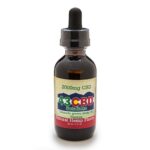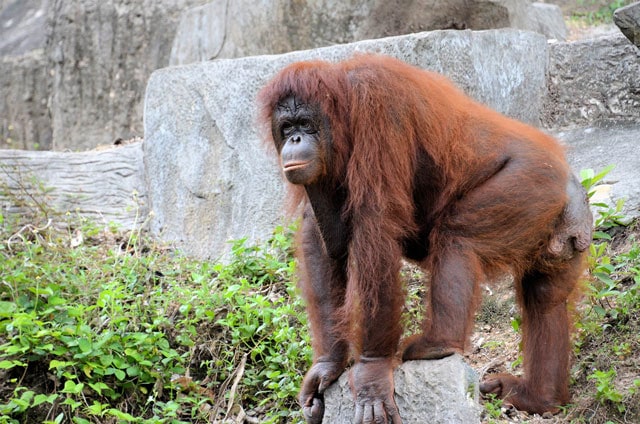
Does your CBD Tincture contain Palm Oil?
Palm oil accounts for one-third of the global consumption of vegetable oil. While it is a useful and efficient oil, it is also known to contribute to large-scale deforestation, greenhouse gases, destroying habitats, and abusing human rights.
Knowing the current effects of the market for palm oil can help you make your own decisions about using cannabis products with this ingredient that holds a bad reputation.
What is Palm Oil and What Products Use it?
Palm oil is derived primarily from the fruit of African oil palms (Elaeis guineensis). While the trees are native to Africa, they are now primarily harvested in Southeast Asia. In fact, Indonesia and Malaysia make up 85% of the global supply of palm oil.
This versatile and edible oil is found in almost half of all packaged items you would find in a supermarket.
In fact, you might be surprised just how many products in your home contain palm oil.
In the bathroom, you can find palm oil in your lotion, soap, shampoo, deodorant, and even your toothpaste.
In the kitchen, you might be able to find palm oil in many of your packaged products- everything from pizza, chocolate, and ice cream, to margarine, potato chips, and bread.
You often won’t find the words “palm oil” listed under the ingredients either. It can be confusing to a consumer to understand which products include palm oil. Some palm-oil derived ingredients include:
Vegetable Oil, Vegetable Fat, Palm Kernel, Palm Kernel Oil, Palmitate, Palm Fruit Oil, Palmitic Acid, Palmate, Palmitoyl Oxostearamide, Palmitate, Palmolein, Palmityl Alcohol, Palm Stearine, Hyrated Palm Glycerides, Palmitoyl Tetrapeptide-3, Glyceryl, Stearate, Stearic Acid, Steareth -2, Steareth -20, Elaeis Guineensis, Etyl Palmitate, Octyl Palmitate, Sodium Lauryl Lactylate/Sulphate, Sodium Laureth Sulfate, Sodium Lauryl Sulfate, Sodium Kernelate, Sodium Palm Kernelate.
Not that all products that use palm oil are bad.
Some mainstream products, like Dove, have made an effort to use sustainable palm oil in their products.
Keep an eye out for products that include the RSPO label to ensure that it uses certified sustainable palm oil. This allows you to know the palm oil used in the product was harvested in a socially and environmentally friendly way.
So, what about the CBD oil that is used as part of your daily health regimen?
Does your CBD Oil use Palm Oil?
CBD oils are typically combined with a food-grade “carrier oil” that is used to dilute the solution and make it easier to digest for consumers. The carrier oil also assists with obtaining a consistent amount of CBD with each dosage.
The type of carrier oil that is used in cannabis products can vary. These oils include MCT oil, hemp seed oil, sunflower oil, avocado oil, and many other digestible oils. One of the most common carrier oils found in CBD tinctures is MCT oil.
What exactly is MCT oil?
When it comes to the CBD and cannabis industry, this oil is often referred to as fractionated coconut oil.
But, here’s the thing.
MCT oil (short for Medium-chain triglyceride) does not actually reveal the exact ingredients used.
While it can easily be assumed that it is made from coconut oil, the truth of the matter is that many MCT oils are made with palm kernel oil as well. Much like any alternative treatment plan, it should be a priority to know exactly what oils are going into your CBD products.
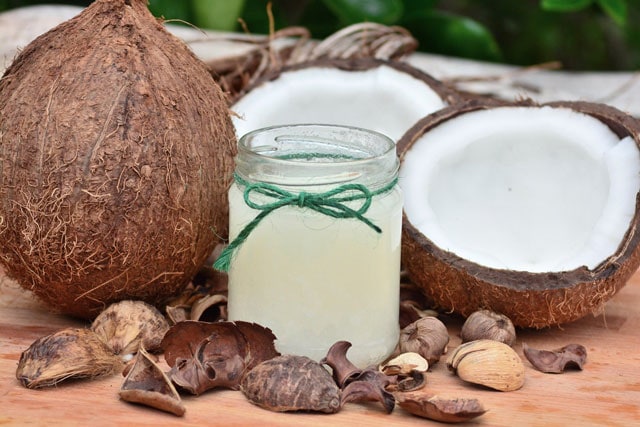
If you find yourself using a CBD product that includes MCT oil as a carrier oil, we recommend reaching out to the company to find out if it is derived from palm oil- and if that palm oil follows safe and sustainable practices.
Why do so many CBD products use MCT Oil?
MCT oil is a very popular carrier oil among the CBD industry. The oil has no taste or smell, making it sought after for CBD products (and other products in the health industry). Also, the medium-chain fatty acids found in the oil go straight to the liver, providing an energy boost. The oil has also been linked with weight-loss and appetite.
So… is MCT oil or palm oil really that bad?
You may have already heard about the threat to the survival of orangutans from the massive deforestation in Borneo and Sumatra but there are numerous issues caused by the demand for palm oil.
What is the Problem with Palm Oil?
The use of palm oil has exploded over the past few decades. This is because the oil is extremely versatile and cost-effective. In fact, the palm trees are so productive that they produce about twice as much oil per acre as compared to other popular crops such as soybeans.
Unfortunately, the efficiency of the trees has been exploited and it has caused many environmental and ecological problems.
Burning Down the Rain Forests
The island of Borneo, shared by Indonesia and Malaysia, is known for its farming of oil palm trees. As the largest island in Asia (and third largest in the world), it is home to ancient, rich forestland and diverse wildlife including orangutans. But this land is being threatened by our demand for palm oil.
Since 1973, over 15,000 square miles of rainforest on this island have been burned and bulldozed to make room for oil palm plantations. That year, old-growth forests covered 76% of Borneo’s land mass. Between 1973 and 2015, an estimated 34% of the forest land was cleared.
This extreme deforestation has had a wide range of effects from climate change to the endangerment of wildlife.
Unsustainable Farming is Threatening the Orangutan Population
The destruction of the rainforest in Indonesia and Malaysia has wiped out over 150,000 endangered Bornean orangutans from 1999 to 2015. While this is due to logging and hunting, palm oil is a driving factor in the long-term population decline of these majestic beasts.
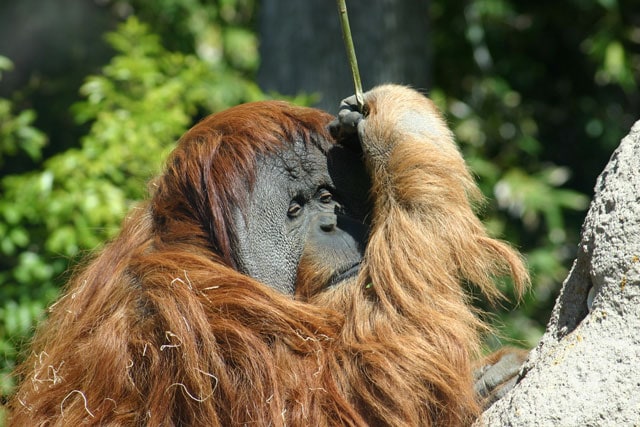
In projecting the habitat loss for Bornean orangutans, it is estimated that 45,000 of the orangutans will perish in the next 35 years. This has led the Indonesian and Malaysian governments to start conservation efforts but the continued demand for palm oil will slow progress.
The Climate Cost of Palm Oil
One-third of all new palm oil plantations are expanded on peat soils that are packed with preserved organic matter. When the peat soils are drained for the plantations, they output greenhouse gases that far exceed the carbon loss from the forest.
In fact, these greenhouse gases are so significant, that they provide a large contribution to global warming. Using data provided over the past three years, it is estimated that the greenhouse gases contribute to 1.4% global CO2e emissions, which almost rivals the GHG put out by the aviation industry.
The destruction of these forests is more than a danger to the environment as it has taken a large toll on many humans as well.
The Human Cost of Palm Oil
While the environmental impact of palm oil is well known, a 2015 investigation shows an ecological impact on human rights. The report from this investigation had many findings in regard to human rights.
- There was a high reliance on casual laborers which lacked healthcare, steady employment, and extremely low wages.
- Daily quotas set by the oil palm farms were unrealistic, forcing the harvesters to hire additional workers. These “hidden workers” were many times women and children and were not paid by the plantations.
- Child labor is common among oil palm farms. The children are worked to help meet the daily quotas and many times drop out of school to help.
- Workers are exposed to hazardous chemicals without any sort of safety equipment. Most of these positions are filled by women.
- Workers lack rights and are unable to organize an independent union. The unions are instead backed by the companies.
Apart from the human cost of the working conditions that have been reported, many people have been evicted and lost their homes due to the palm oil industry. On the Indonesian island of Sumatra, palm oil companies have been reported of tearing down entire indigenous villages, leaving the people without any place to live.
Burning the forestland has also taken a large toll on the people of Indonesia. In 2015, it is reported that over 12,000 premature deaths were caused by the forest fires, both natural and not.
Know if your CBD Oil uses Palm Oil
There is no doubt that MCT oil used from palm oil is a cost-effective carrier oil for the CBD industry. There are many other options to choose from that are backed by sustainable and eco-friendly farming practices. The CBD oil from 43 CBD Solutions has taken a stance to be more environmentally aware by never using palm oil in our products.
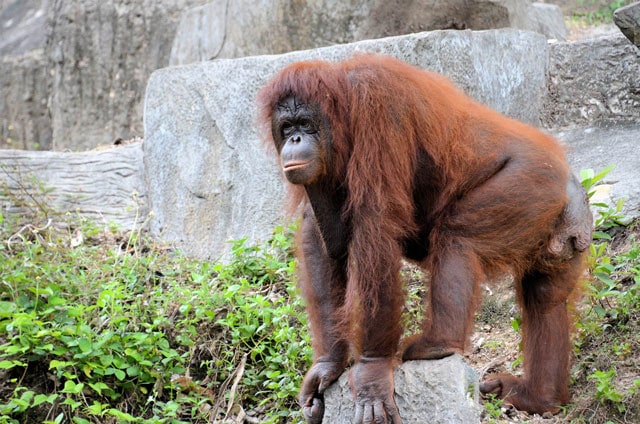
All our carrier oils are organic and environmentally friendly:
CBD Natural Tincture: Organic Hempseed Oil
CBD Pumpkin Spice Tincture: Organic Pumpkin Seed Oil
CBD Salve: Organic Coconut Oil & Organic Olive Oil
Furry Friends Formula: Sustainably Harvested Omega-3 Anchovy Fish Oil
Massage Oil: Organic Fractionated Coconut Oil
Part of our promise and guarantee to our customers is that we provide you with 100% trust and transparency with all our methods and ingredients. Feel free to reach out to our team if you have any questions about our carrier oils or for more resources on the effects of palm oil demand.
Sources:
https://www.ncbi.nlm.nih.gov/pmc/articles/PMC4192077/
https://www.nature.com/articles/srep32017
https://www.nationalgeographic.com/news/2018/02/orangutan-habitat-loss-hunting-killing-borneo-spd/
https://www.nationalgeographic.com/news/2016/06/palm-oil-labor-exploitation-indonesia/

